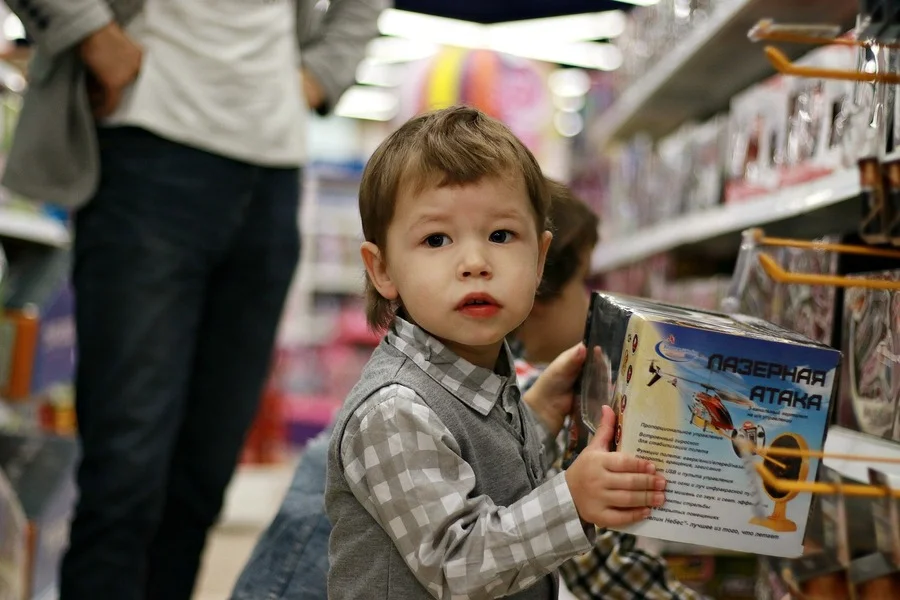The global maternal and baby market has experienced a lot of progress for the past two decades. In the process, parents’ buying behaviors have changed as well. For instance, millennial and Gen Z parents are going all out for trendy and quality baby products that ensure their babies’ wellness and keep them fashionable. So, it’s a good time for sellers to hop on this trend. Here’s a peep into the market size to give sellers a bigger picture of this trend’s profitability.
Table of Contents
What’s the market potential of baby care products
Four top trends fueling the baby products industry
Action points
Final words
What’s the market potential of baby care products?
According to a Factmr Report, the global baby care products market was valued at USD 8 billion in 2021. And it is projected to reach $19 billion by 2023, registering a compound annual growth rate (CAGR) of 9% during the forecast period.
The increasing urban population is the prime driving factor behind the expansion of the baby products industry. Further, consumers’ top priorities have shifted from budget to health and wellness. Parents are more interested in buying products from reputable brands that provide scientifically validated baby products to ensure babies’ healthy growth and development.
Consumers’ purchase decision journeys and shopping psychology before and after the birth of their newborns are essential to understanding and keeping up with the competition.
Four top trends fueling the baby products industry
Quality is more valuable than discounts

Safety comes first in the list of most important factors for children’s purchases, followed by functionality and effectiveness. The growing awareness about health and well-being has made people more conscious when shopping for their kids. Modern-day parents consider high-tech gear, chemical-free baby products, and organic foods as the best baby products than typical over-the-shelf items.
Parents’ concerns about protecting their babies have inspired successful brands dealing in baby supplies to cater to their needs. One of the areas parents pay attention to is quality clothing. After all, it comes into direct contact with the child’s sensitive skin. Also, parents prefer ordering quality baby food and sustainable gear, such as organic diaper balms, play mats, and non-toxic sleeping bags.
Retailers can position themselves well in the market if they invest in the proper range of safe and eye-catching baby products.
Digitization of the baby care industry
The emergence of digital platforms and new parenting trends have largely contributed to the revolution of the baby products market. Brands constantly innovate to satisfy customers’ who wish for high-quality and premium baby products. For example, automatic folding strollers make it easy for parents to travel.
Further, information explosion is making it seamless for prospects to scan their options. And consumers are no longer barred by distance or language. So, if a customer in Asia likes an item from baby products Canada, they can easily order online.
Typically, transparent brands that provide authentic information are considered more credible. Although digitization makes it challenging for baby product brands to stand out, wholesalers and retailers can stand out in this domain. So, sellers can use consumers’ information to match their interests with products while ensuring reliability and function. For instance, consumers are buying glass baby feeding bottles more due to their non-toxic traits.
Mothers must have it easy
Gen Z moms are eager to strike a balance between motherhood and work. They believe in standing up for themselves and inspiring their kids with resilience.
As a result, manufacturers of baby items leverage this in their marketing efforts. They highlight how their product eases things for moms. While at it, parents want the convenience of shopping for baby products. And some sellers foster the possibility by offering free shipping and same-day delivery options to give parents their orders in their comfort.
Businesses dealing in baby items must understand the behavior of parents. These parents take their time to read reviews, check product certifications, and compare prices. In short, parents rely on the internet to make informed decisions about baby products before buying. Interestingly, this selection process cuts across different baby products ranging from furniture, feeding bottles, to diapers.
Increasing autopilot consumption

Since most baby items are within reach for parents, they have entered an autopilot mode of baby product shopping. Also, parents look for safety standards and quality with baby products like car seats, baby carriers, strollers, and cribs that require a close watch.
Ease of use and durability are some other factors affecting parents’ selection. For instance, some parents sign up for autopilot consumption if a specific brand works for their babies. Hence, it’s the right time for sellers to study the market and offer the most desirable baby products.
Action points

The baby product industry is fascinating because it changes constantly to keep up with the latest trends. Factors like customization and sustainability are significantly affecting the shopping process. And this is partially due to the global awareness of health and well-being.
Organic food choices are just one example of the baby products market changing with time. Furthermore, significant technological modifications and parental roles influence parents’ choices.
Therefore, retailers should employ several tactics to stay ahead of the trends. First, they should do some research to monitor baby product markets for changes and look for new items entering the industry.
Also, it would help if sellers connect with baby product blogs or influencers with their fingers on the pulse of the baby product industry. So, by leveraging qualitative and quantitative research methods, they can better plan how their businesses will respond to the growth and evolution of the baby products industry.
Final words

Parents have varying preferences for buying baby products. So, as a seller, it’s crucial to do feasibility studies on the business and pick a profitable niche based on the customers. While at it, sellers should select top quality products regardless of their price tags.




